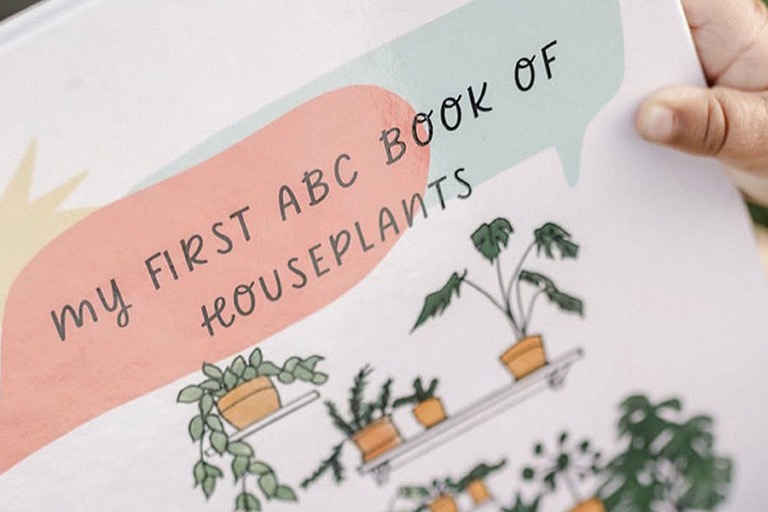When I added my My First ABC Book of Houseplants to my list of books that will teach kids to love gardening, I asked the author, Priscille Joseph, to give our readers a few tips on how to teach kids to love plants.
Teaching kids to care for houseplants is a wonderful way to instill a love of nature, responsibility, and mindfulness.
Priscille is a skilled communicator and super passionate about plants, so she was kind enough to share some practical and engaging tips to get started.
1. Start with plants that are easy to care for.
Begin with resilient houseplants such as spider plants, pothos, or peace lilies. These plants are forgiving, thrive in various light conditions, and are perfect for little hands to manage. Kids will feel successful when their plants stay healthy!

2. Let kids pick their own plants.
Take your child to a local nursery or greenhouse (like the one I often collaborate with in Ottawa, Canada) and let them choose a plant they’re drawn to. Giving them ownership over their plant fosters a sense of responsibility and pride.
3. Make the process fun and visual.
Create a houseplant chart or calendar to track watering days, growth progress, and fun facts about each plant. You could even use a visual calendar, like the ones I design, to help kids plan plant-care routines in a colorful and interactive way.
4. Teach kids to love plants through hands-on activities.
Involve your child in repotting plants, misting leaves and wiping off dust. You can even teach them how to propagate plants by cutting pothos vines or growing new plants from monstera leaves.
These hands-on experiences are not only educational, but it’s exciting for kids to witness nature in action.
5. Incorporate storytime.
Use books such as My First ABC Book of Houseplants to introduce kids to different types of plants in a fun, educational way. I designed the book to engage children with colorful illustrations, plant names and even a reference guide for where plants are native to.

6. Assign plants their own personalities.
Encourage kids to name their plants and treat them like their “green friends.” This adds a sense of connection and responsibility. My toddler loved naming our monstera “Leafy” which became a fun way for her to interact with the plant.
7. Set up a kid-friendly planting station.
Create a small planting station with child-sized tools where they can plant seeds, repot succulents or water their plants. Having their own dedicated space makes them feel more involved and independent.

8. Turn plant care into a routine.
Integrate plant care into their daily or weekly tasks, like watering on Saturdays or checking for new leaves. Pairing it with other activities, such as singing or storytelling, keeps it engaging.
9. Explore nature together.
Take your child outside to observe plants in parks, gardens and your backyard. These outings build a deeper appreciation for nature and can spark more curiosity about how plants grow.
10. Celebrate progress.
Mark milestones like a new leaf sprouting or the plant thriving for a month. You could even take before-and-after photos of their plant to show how their care is making a difference.

The key is to keep things fun, visual, and age-appropriate. Celebrate their efforts, use creative tools like books and charts, and make plant care a part of their daily life. When kids see the impact of their care (whether it’s a thriving plant or a new sprout) they’ll naturally stay engaged and excited about houseplants.
By teaching children to care for houseplants, you’re fostering responsibility, patience, and a lifelong appreciation for nature. Plus, it’s a beautiful way to create lasting memories together as a family.
Thank you for the tips, Priscille! Have a look at Priscille’s book, My First ABC Book of Houseplants, to get your kids started on discovering the magical world of plants.
You can follow Priscille for more tips on Instagram and on Youtube @priscille.Joseph
Some of the links in this post are affiliate links. This means that if you make a purchase through one of the affiliate links, I will get a very small commission or referral fee at no additional cost to you. You can read more on my affiliate policy page.

